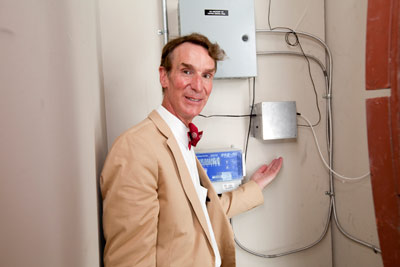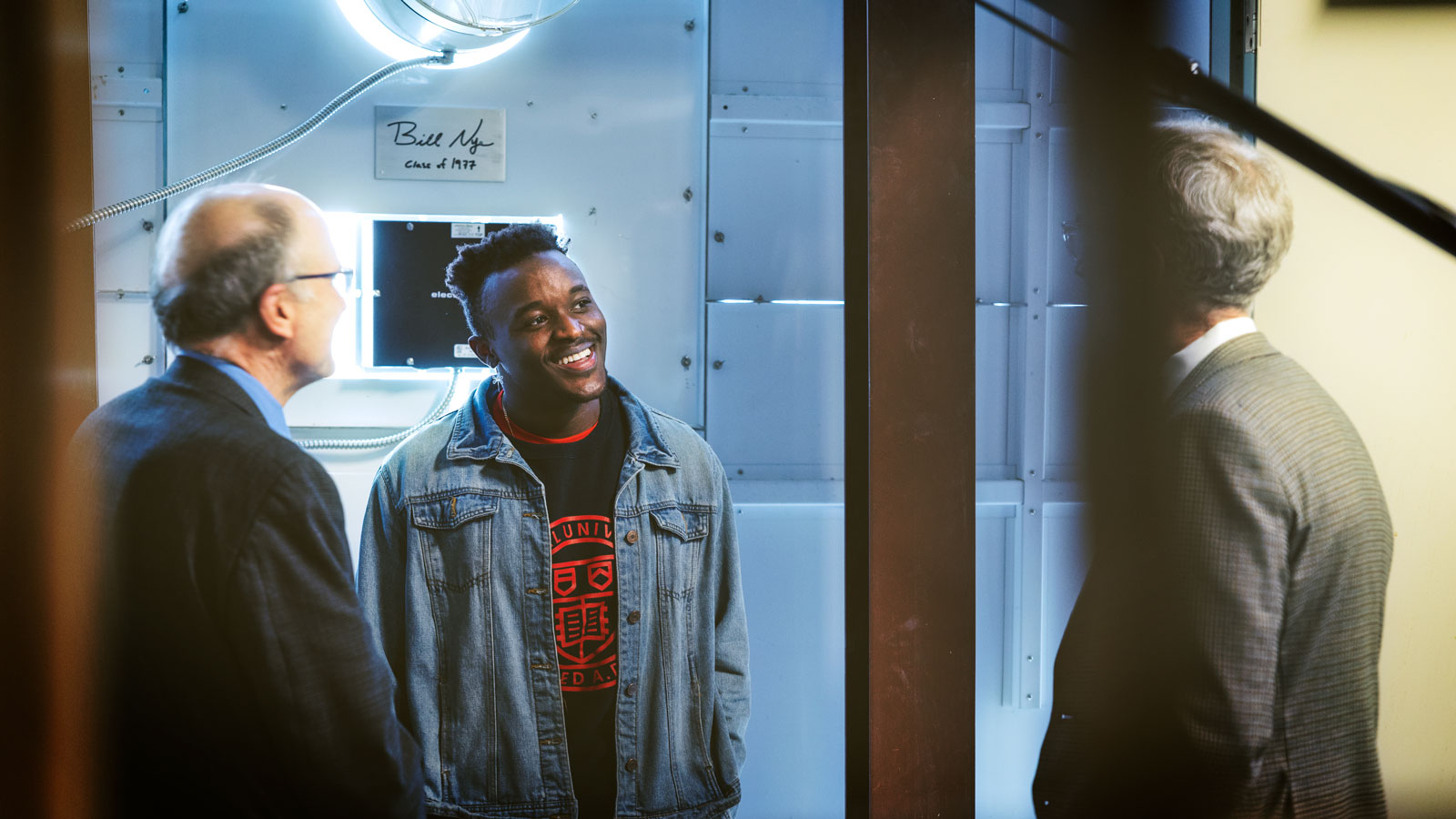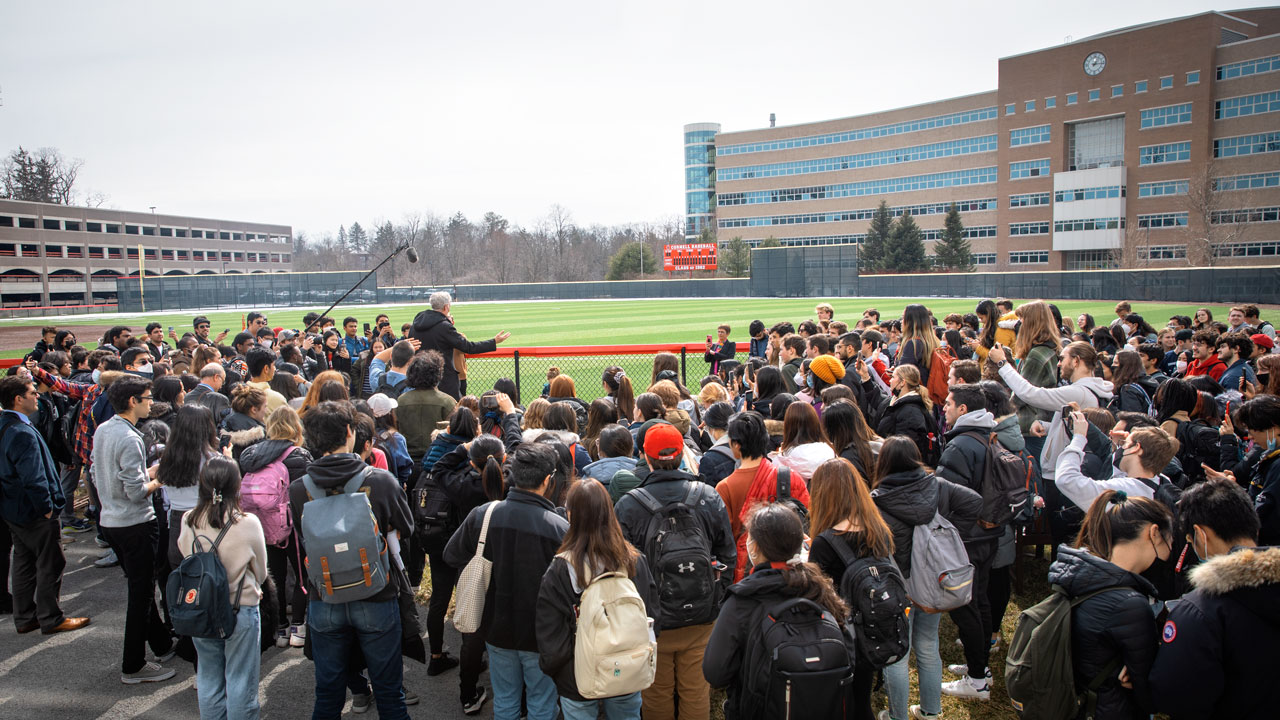How the Solar Noon Indicator Works
By Bill Nye '77

The building faces northeast, so there is little afternoon sun. To light a feature on the clock with sunlight, we have to bring light from another side of the building, and for a cloudy Ithaca day, we have to bring light from a greater area of the sky than that subtended by the Sun’s disk at noon. Since the Earth’s atmosphere scatters light to us from all directions, this can be done with a lens. I strongly encourage everyone to take a moment and consider the insight and diligence of our ancestors, the ancient people who understood the motions of the Earth and Sun without the aid of textbooks or pictures from space.

So it is then that the Rhodes Hall Clock features a Solar Noon Indicator (SNI). This Sun-shaped feature below the number 12 on the clock’s face is illuminated with sunlight everyday when the Sun is at its culmination, even when the sky is cloudy. This feature is a product of my Cornell years. It combines fundamental principles of modern electrical and mechanical branches of engineering along with wonderful discoveries in astronomy that date back more than 19 centuries.
I very much hope that the Solar Noon Indicator will inspire Cornellians and visitors alike, as they note the time of day reckoned with our Sun ponder their place among the stars.


